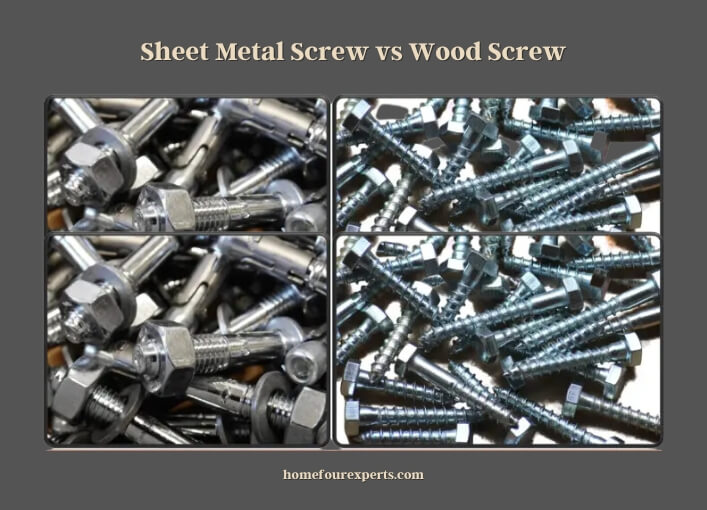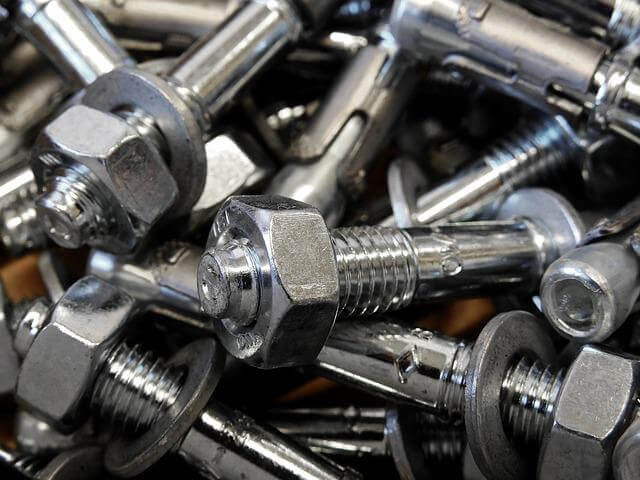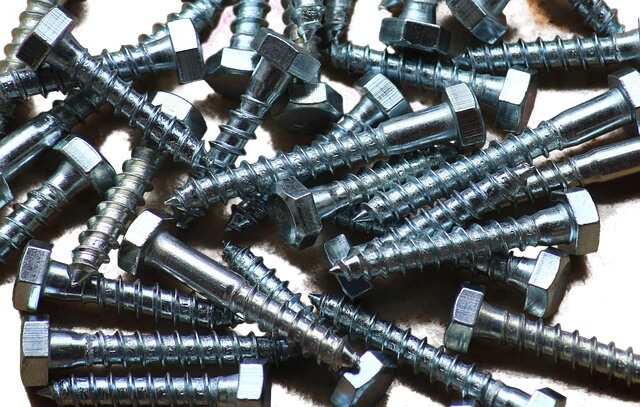Published on: June 16, 2022
Written by David Rowan / Fact-checked by Eric Devin
There is no such thing as a screw that is just a screw. There are various distinct sorts of screws, each designed for a certain task and to be used on specific materials. The forms, lengths, heads, threads, and points (or lack thereof) of most varieties of stainless steel screws make them easy to distinguish.

Screws are divided into two categories. One kind is used to secure wood, while the other is used to fasten sheet metal. Except for their threads, the two varieties are identical in every way. The threads of wood screws are quite wide-spaced and medium-depth. A threadless shank is around one-quarter to one-third the overall length of a wood screw over an inch long. Sheet metal screws feature threads that are deeper, closer, and sharper, and they always run the length of the screw.
Only a few individuals are aware of the difference between metal and wood screws. These screws differ significantly in practice and cannot be used interchangeably. What’s the difference, and why is that?
What is a Metal Screw?
Typically, metal screws are used to join large, homogeneous metal parts. Because they are not self-tapping, a pilot hole must be bored first. In most cases, the pilot hole needs also to be tapped (threading procedure).

Three types of metal screws
1. Machine Screws
Machine screws are not self-tapping and are often used for thick metal parts. The entire shank is threaded in this case, and the screw is fastened into a pre-tapped hole with the same thread pattern as the screw. Machine screws can be tightened with a nut for increased security.
2. Cap Screws
Cap screws are commonly used to secure metal plates in dies, molds, machine components, appliance parts, and consumer electronics. These screws feature a big head connected to a threaded cylindrical shaft and are commonly fixed without a nut. When tightening the screw, the head offers a mechanical stop, resulting in a significant clamping force.
Because cap screws are not self-tapping, you must drill a pilot hole equal to the screw’s core diameter and mill the threads.
Metal screws, on average, have finer threads (more threads per inch) than wood screws.
3. Sheet Metal Screws
Sheet metal screws feature a fully threaded shank as well, but unlike other metal screws, the point is sharp. Because sheet metal screws are frequently self-tapping, this is the case.
What is a Wood Screw?

The head, shank, threads, and tip are the four sections of a wooden screw. The tip is generally sharp and pointed to help the screw cut into the material exactly. The thread is wrapped around the shank, which serves as the screw’s core. As the screw is driven further, the thread creates grooves into the material, allowing it to grasp the material securely. This grip secures the workpieces together by preventing the screw from being pulled out.
Metal vs Wood Screws
Wood and metal screws have various qualities that separate them for their specialized tasks, despite their similar function and usability.
Not True Substitutes
The two screw types aren’t completely interchangeable. While a sheet metal screw can be used to fix hardwood parts, a wood screw with a smooth shank portion will not form a tight sheet metal bond, and fully threaded wood screws may hold poorly. Both types of screws are available in lengths ranging from 1/4 inch to 3 inches, making them suitable for almost any household fastening operation.
Shaft Diameters
Both wood screws and sheet metal screws have shaft diameters that are expressed in industrial numeric gauge numbers ranging from Nos. 0 to 16. A No. 0 screw has a diameter of 3/50 of an inch, whereas a No. 16 screw has a diameter of 3/8 inch. A No. 5 screw (1/8-inch diameter shaft), a No. 9 (11/64-inch), a No. 14 (1/4-inch), and a No. 15 (5/16-inch) are all common sizes.
Head Shapes
Flat heads, oval heads, and round heads are available on wood and sheet metal screws. When the screw is tightened, the flat head creates an indentation in the material, allowing it to finish flush with the surface. The flathead can be driven below the surface and hidden with a wood or putty plug-in wood. The widest part of the oval skull is longer than the tallest part. The circular head is the same width and height on both sides. These later forms are left exposed on the surface of the substance. Regular slotted and Phillips heads, as well as square drive and other brand-name heads, are available for both types of screws. Hex heads are also available on sheet metal screws, which are operated with a magnetic hex driver attached to a drill.
Metal Types
Mild steel, toughened steel, stainless steel, aluminum, brass, and bronze are among the metals available for wood screws and sheet metal screws. Steel screws are available in a variety of finishes, including plain, rust-resistant plated, and galvanized. Stainless, aluminum, plated and galvanized screws are designed for outdoor projects that are subjected to a lot of moisture, whereas brass and bronze screws are mostly offered to match brass or bronze hardware.
Thread & Shank
Metal screws are threaded all the way through the body, whereas wood screws aren’t. Metal screws also have a higher pitch (number of threads per inch) than their wood screw equivalents. It’s also worth mentioning that for self-tapping installations, metal screws are ideal.
The threads of wood screws are quite wide-spaced and medium-depth. A threadless shank is around one-quarter to one-third the overall length of a wood screw over an inch long. Sheet metal screws feature threads that are deeper, closer, and sharper, and they always run the length of the screw.
Can I Use Sheet Metal Screws Instead of Wood Screws?
There are several differences between the two types of screws. While a sheet metal screw may be used to firmly fix wooden parts, a wood screw with a smooth shank portion will not generate a tight sheet metal union, and fully threaded wood screws may perform badly.
If you’re in a need and don’t have the correct screws, a sheet metal screw-on wood can suffice. The situation is not, however, as it appears. When used on sheet metal, wood screws, especially those with a threadless shank, are unlikely to establish a tight enough connection.
Are Metal Screws Stronger Than Wood Screws?
If you’re trying to attach sheet metal, metal screws are the way to go. They’re easier to push into metal, and they’ll provide more strength and security. Wood screws, on the other hand, are better suited for use with plywood, timber, and other wood products.
Will Metal Screws Work on Wood?
Metal screws are the most versatile screws and may be used to attach any material to a metal foundation, including plastic, fiberglass, and wood. Hinge, hasps, brackets, and other sorts of hardware can also be attached with them.
Bottom Line
In conclusion, metal and wood screws have a lot in common in terms of size and basic function, but they also have design aspects that are useful in certain scenarios. Metal screws have finer threads that cover the whole body, whereas wood screws have coarser threads with smooth shanks below the head. While any screw may be utilized for any project in a hurry, these fasteners operate best when used for their original applications.
The easy solution is to always request the appropriate screw for the work at hand. If you can’t identify the difference between wood and metal screws by looking at them, your hardware store or fastener provider can.
Relevant Resources:
About This Writer

Hello, I am David Rowan. I am a professional contractor with 10 years of experience in home building, different tools used, construction, home remodeling, and other home improvement work. I have already built many custom homes and continued to do several woodworking projects along with how to deal with all categories of tools.